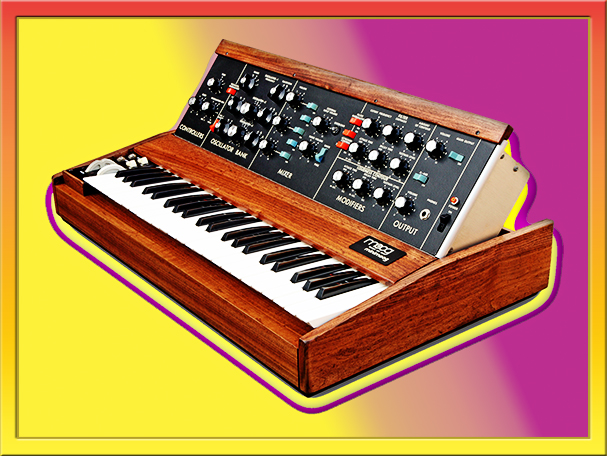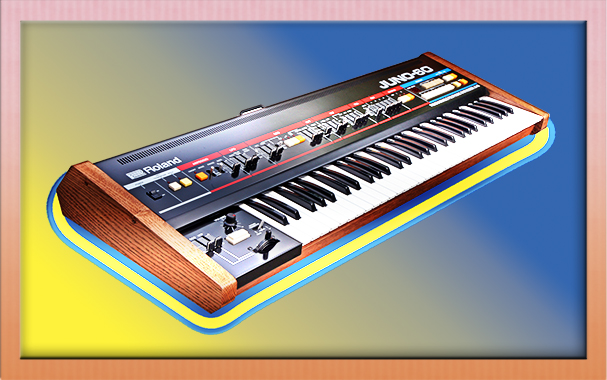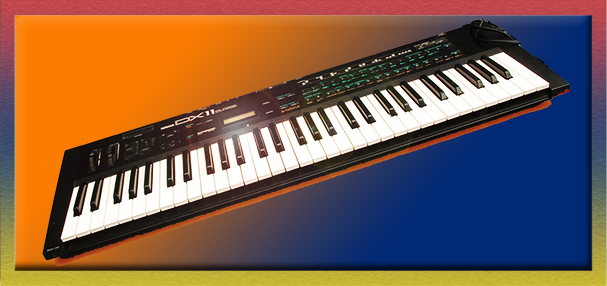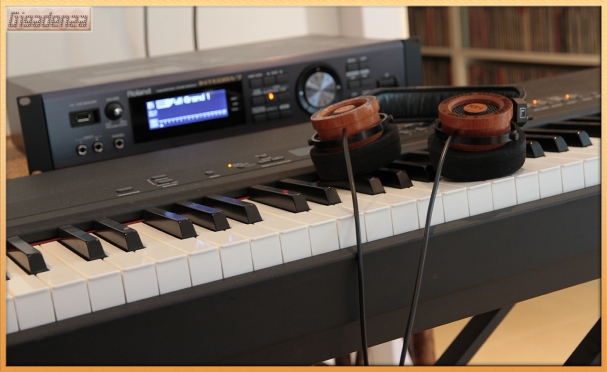Synthetic Musings
An Engineeer’s Dilemmas
Pottering about in the studio recently in 1764, drew me into a bout of rancorous rewiring. What had stemmed from a triumphant brainwave quickly degenerated into stubborn and painful perseverance, the sort one always experiences when long past the point of no return, yet consumed with a desperate desire to begin again.
What had incurred my displeasure? I was moving a synthesiser, my Roland Phantom XR, closer to the big blue tower to tether directly to a USB 2.0 port due to my monitor’s supposedly compatible USB 3.0 hub rendering the subject unusable.
An hour of tortuous twisting and tiresome threading ensued until, mercifully, from my Fantom’s forlornness sprung flowery frivolity, but not without a traditional and tedious concession. On this occasion, it was the need to substitute a perfectly appointed meter long midi cable with a cumbersome five meter serpent that callously sneered over the top of my monitor whenever I chanced to catch its eye.
Despite technically surmounting the original and far more restrictive fault, I was unable dispel a profound onset of pessimism and began to question whether a lack of confidence is the catalyst to my and other sombre sound-scapists urges to periodically embark on the plug and grunt equivalent to a sunday gym session.
Remaining in Gigadenza’s hive of hindsight
On a nerdy spring afternoon of set-up and config, even when placated with as many smoky cups of lap sang as my dear Mum could manage, patience was rarely if ever my party piece.
Upon receipt of a button laden box seething with samples, I never once doggedly digested the 500 page manual before insatiable curiosity crippled all common sense and ignited a yearning to feverishly fling aside the polystyrene, dig out a clutch of cables, anxiously inspect my acquisition for the presence of vital ins and outs, press, twist, groan, grimace, effect poses that could pass for a novel and terrifying form of yoga, plug in, switch on, squint, push once, then twice and in hapless resignation, pray for sound.
Over the years this technique, though severely flawed, had always proven productive and my modest stack of synthery was more often called upon to create than it did, through flagrant fiddling, demonstrate lapses in my work ethic and professionalism.
Nevertheless, whenever plagued by technical hitch of a novel or recurrent pedigree, the remedy was always identified via a nervous display of trial and error, rather than a competent showcase of progressive and logical recollection.
Now floundering helplessly in doubt over my anodigital acumen, I longed for things to change, to be able to nourish my lobes and have useful information aptly filed and indexed by nano nibelungs for efficient deployment when any Cakewalk catastrophe loomed.
It was then that my conscience brusquely instructed;
Cease wallowing in self pity, the wisdom you crave can be harvested from sources more accessible than any library and more topical than last week’s best selling guide to to the universe of electric unison and harmony. Scour those sites, establish what, for instance, “Monophonic”, “Polyphonic” and “Multitimbral” mean.
Then, combine your discoveries with a casual canter around the humble furnishings of your own studio, if for nothing but passion for your interests, pride in your tools and the want to give a little in return.
Analogue vs. Digital
From the very outset, a fully fledged analogue synthesiser enabled our ears witness electricity sculpted by oscillators, coloured by filters and envelopes rattling through resistors and cruising around circuitry in real time.
Minor voltage irregularities were liberally subsumed and served to enhance the fuzzy, organic warmth adored by all with a soul – no bias intended! The result might well have verged on a grotesque parody of the advertised “strings” or “brass” but the sound itself, formulated in a domain of sample-less purity, could claim to be similarly “infinite” in scope and posses many acoustic attributes.
No matter how seductive its appearance, resplendent its LCD or plentiful and functional its switches, knobs and sliders, it was and remains in a digital synthesiser’s nature to eternally repeat precisely what was commanded during its militant and sterile genesis.
A collection of compact recordings, strategically looped and stored in read only memory (ROM) has fixed dimensions that by logic alone would imply its terminal inferiority to analogue randomness. But a true digital thoroughbred houses hundreds, even thousands of samples, painstakingly garnered from sources of the highest quality, expertly calibrated and seamlessly tessellated to create a virtual instrumental wonderland whose proportions and authenticity exceeds anything remotely possible in raw analogue.
Thus, in a debate where every argument is engaging and learned and subjectivity always justified, the notion of a victor is as repugnant as roaring silence.
Monypolymulti-nihili-amplification.
Before reviewing the capabilities of any synthesiser, especially those with a digital heritage, it is important to distinguish between two ubiquitous terms that are a cause for understandable confusion, polyphonic and multitimbral.
Meet the mythical Minimoog an angelic work of analogue art and veritable saint amidst sagacious synth searchers. The Minimoog is famously and endearingly “monophonic”. In absurdly flowery terms, no matter how many of those 44 ravishingly responsive keys or delectable dials your dainty digits press and twist, its fabled, emotive and infinitely versatile voice only emit one note at a time.

Polyphonic
Ambling further down the corridor of analogue antiquities roundly rewards us with a second redoubtable relic. The Juno 60, one of the earliest practitioners of electronic “polyphony” and Roland’s débutante. A polyphonic synthesiser can produce multiple tones simultaneously and the tones themselves might consist of several individual layers or “voices”. While a fraction less sought after and arresting to the eye than the Minimoog, the Juno afforded all with six errant fingers the chance to conjure up a sublime hexa-chorus of creamy 80s chedder.

Venturing briefly into the acoustic realm offers a cogent analogy. Imagine a gleaming concert Steinway nobly awaiting its gallant soloist’s rendition of Rachmaninoff’s 3rd. Throughout the performance, we’d savour voluminous virtuosity, scintillating trills, snarling octaves, the ultimate in polyphonic pyrotechnics.
The pianist would use the pedals to sustain scales and chords, creating colourful “washes” of sound over which melodies would soar, or to realign the entire keyboard, forcing the hammers to strike two strings per note instead of the usual three and thereby induce subtle variations in timbre.
Think of the strings and pedals as organic counterparts to the Juno 60s voices, buttons and faders, which in the same fashion, a skilled synth artist would manipulate to control oscillators and filters and bring about their own textural transformations. Yet as an instrument, like the formidable concert grand, it remained limited to a singular timbre at any given moment.
Multitimbral
A tremulous trot toward the third and ultimate exhibit ushers us into a nascent digital dominion, where we encounter Yamaha’s venerable DX11, a flamboyant 61 key fanfare of FM fun and multitimbrality in fine, if fledging form. A modest octet of voices might have been all it could muster but this time, even when piping in parallel, every faithful choir member passionately projected a unique sonic signature.

In midi terms, multitimbral denotes a synthesisers faculty to receive midi data via exclusive channels, generate the requested tones and their characteristics simultaneously and route them to dedicated or communal outputs.
For detailed sequencing tasks, this feature could well prove a lifesaver since in essence, it is akin to having dozens of physically separate instruments with independent expressive potential amicably packed into a single module. One could for instance, have a USB MIDI interface with multiple inputs anchored to a computer, fire up a multi-track template on Sonar, then designate each track to receive unique incoming signals from an especially talent laden performance, involving a blend of pre-sequenced midi content and human virtuosos vehemently vying for their own bite of the blues, before using the software to assign those signals to a multi timbral synth connected to the same system.
Returning to our concert paradigm now allows us to pinpoint a vital discrepancy. Where a polyphonic synth could enact the Steinway – assuming a stunningly authentic piano sample set – one mutitimbral device could theoretically emulate the rest of the orchestra. The strings, woodwinds, brass and percussion, each concurrently tending to a melodic or accompanying line, whilst retaining its unique textures and nuances throughout the interpretation.
So, what did the rational side of my conscience instruct as our meandering midi pilgrimage commenced? To seek out and solve the mysteries of Monophonic, Polyphonic and Mutitimbral. It would appear with all three vows fulfilled and an ambitious side quest to summarise analogue and digital artfully completed en-route, we can at last recline and revel in some tempting trinkets of actual audio.
Pages: 1 2






